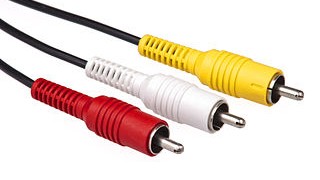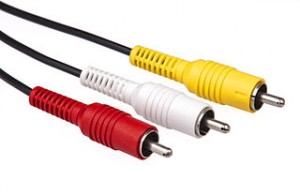
When I wrote about choosing the correct accessory for Raspberry Pi, I mentioned that choosing the display cable could get a little tricky. There are a lot of things to keep in mind and so I thought of writing a separate guide for choosing the correct display cable.
The following are the different scenario’s which you might encounter.
You have a HDMI capable display device
If you have bought your TV or monitor in the last year or two, chances are high that you already have a HDMI capable display device. If you have a HDMI capable device then all you need is a HDMI to HDMI cable and you should be good to go.
If you look closer you might already have a HDMI cable, which would have come with your device. If not you could buy one for around Rs. 500 in SP Road.
You have a composite video capable display device
If you have a composite video capable device like a TV, then you can use a composite cable to connect Raspberry Pi with the device. The composite cable, also known as RCA connector consists of three plugs, one yellow, one white and one red (refer to the image below)
You have to connect the yellow lead (video) between Raspberry Pi and your device.
There are two small issues with RCA cables.
- The resolution supported by Raspberry Pi through the composite cable connector is small.
- You have to use a separate audio to composite cable converter to get audio.
You have a DVI-D capable device
If you have a device that has a DVI-D connector then you can buy a simple HDMI to DVI cable and use that to connect Raspberry Pi to your TV or monitor.
This works exactly like HDMI output and you should have any issues. You can get this cable for around Rs. 750 in SP Road.
DVI-D vs DVI-A vs DVI-I
Once thing to note is that you must make sure that you have a DVI-D (digital) slot and not a DVI-A (analog) or a DVI-I slot. Compare your connector using the following diagram to figure out which one you have.
DVI-D works by sending digital signals while DVI-A and DVI-I works by sending analog signals. They are not compatible with each other and Raspberry Pi supports only devices that have DVI-D slots.
You have only a VGA capable device
If you have a device that supports only VGA (like an old monitor or projectors), then things get little tricky, since Raspberry Pi doesn’t have support for VGA devices out of the box.
You might come across VGA to HDMI cables but these are used to convert VGA signals into HDMI signals and not the other way around.
There are a couple of HDMI to VGA converters available, but they are generally quite expensive and are not available in SP Road. The following are some adapters that are known to work.
- Adafruit (expensive, but supports audio as well)
- Amazon (supports only video, audio is not available through Pi’s audio jacket)
I bought the second one from Amazon and it looks like this.
It works with my very old VGA monitor, but the problem is that you don’t have audio support. Since HDMI output is enabled in Raspberry Pi, it shuts off the audio jacket.
Update: I found a way to enable audio output even when hdmi is enabled
Just use SSH
The last option is to just use SSH and connect to Raspberry Pi from a terminal. This of course needs your Pi to be connected to a network.
You can also install a VNC server in Raspberry Pi and use any VNC client to connect to it.
I was using this approach till I bought the HDMI to VGA converter.
I hope this guide helps you to choose a correct cable and display device for Raspberry Pi. If you have any more suggestion, feel free to leave a comment below.
Happy Pi’ing 😉



Pingback: A guide to choosing correct accessories for Raspberry Pi | Hardware Fun
is it possible to use mobile display units to connect to RPi? How?
By mobile units do you mean mobile? If yes then I am not aware of any way to do it.
Maybe he ment just a display, e.g. a 7” display. If U ment those one, remember how that one gets its data. E.g. as an analog signal like RGB or as a digital signal like DVI-D or HDMI. At least U would need a preamplifier to get a certain signal level in analog and digital modus to make the datas (what U would see on the portable screen/display) available to the portable displays, not a simple thing. Maybe there is someone out there who did it already and will supply us with details.
DVI-I supports both digital and analog signal and it’s compatible with DVI-D and HDMI.
I was not able to find a HDMI to DVI-I cable. Do you have a link or information about a cable that supports HDMI to DVI-I?
hello.. can i use any HDMI TO DVI-D cable? as my samsung 20′ monitor supports vga n dvi-d and dvi will give better resolution n less costly than hdmi to vga converter
If your monitor has DVI-D support, then most HDMI to DVI-D cable should work.
Hello,
I have a similar hdmi to vga converter from rs component but I am not able to get a signal out of it. Did you changed your config.txt ? I already tried hdmi_safe=1 but no luck
No. I didn’t change anything in config.txt to get the video to work.
What if I use an HDMI to RCA converter? Will that work?
I have not used one myself so I don’t know for sure. But I guess it should work.
It may be worth noting that there is not HDMI to Display Port cable. What looks like a conversion cable is ONE WAY, you can convert from Display Port to HDMI, but not the other way around.